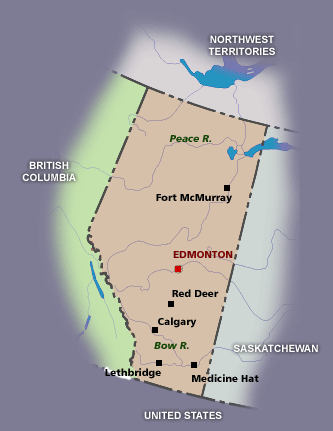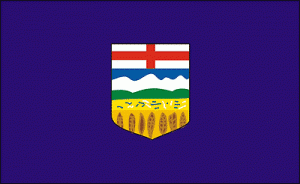Alberta
Pray:
- Pray for the Aglow groups and leaders to be strengthened.
- Pray for all the resources and creativity needed to fulfill the intentions of God in the province of Alberta.
- Pray for the Aglow prayer group in the Capital city.
- Pray for godly government leaders. Blessed is the nation whose God is The Lord, the people whom He has chosen for His own inheritance. Psalm 33:12
Proclaim:
- Arise, shine; for your light has come! And the glory of the LORD is risen upon you. For behold, the darkness shall cover the earth, and deep darkness the people; but the LORD will arise over you, and His glory will be seen upon you. Isaiah 60:1,2 (NKJV)
- Lift up your heads, O you gates! Lift up, you everlasting doors! And the King of glory shall come in. Who is this King of glory? The Lord of hosts, He is he King of glory. Psalm 24:9-10 (NKJV)
Interesting Facts About Alberta
Government: The province of Alberta has a parliamentary form of government. The chief executive of Alberta is the lieutenant governor, who is appointed by the Canadian governor-general in council to serve a 5-year term. The lieutenant governor, representing the British crown, holds a position that is largely honorary.
The premier, the leader of the majority party, is the actual head of the provincial government and presides over the executive council. The Legislative Assembly contains 83 seats, including those of the premier and the members of the executive council. Members of the legislature are popularly elected to a 5-year term; however, the lieutenant governor, on the advice of the premier, may call for an election before the term has been completed. The province of Alberta is represented by 6 senators appointed by the Canadian governor-general in council and by 26 members in the House of Commons, popularly elected to serve terms of up to five years in the Canadian Parliament.
People: In the early 1880’s, there were fewer than 1000 non-Aboriginal people in the area that was to become the province of Alberta. The government’s aggressive efforts to promote immigration and encourage agricultural development between the 1890s and the 1920s increased the Alberta population to half a million by 1920. Today, roughly 3 percent of the population in Alberta is Indigenous Canadian, 44 percent are of British descent; other large ethnic groups are the German, Ukrainian, French, and Scandinavian. Approximately 24 percent of the population can trace their heritage to virtually every country in the world. Approximately 80 percent of Albertans live in urban areas, and more than half live in the two main cities of Edmonton, the province’s capital, and Calgary.
History: The Aboriginal people, the Piegan, Cree, Blackfoot, Blood, Gros Ventre, Sarcee, Kootenay, Beaver and Slavey Indians, speaking a variety of Athapaskan and Algonkian languages, were the first people to live in what is now Alberta. They inhabited a vast wilderness territory, living nomadically hunting and trapping and foraging the rich natural resources of the land. The woodland tribes of the central and northern regions, became partners of the European fur traders who arrived in the 18th century. The first European to reach what is now Alberta was Anthony Henday in 1754, although the land was claimed by the Hudson’s Bay Company in 1670. Peter Pond, of the North West Company, established the first fur-trading post in 1778. The rival Hudson’s Bay Company built competing fur-trading posts over the next century and a half. The rivalry ended in 1821, when the two companies merged.
Interest in colonization of the west increased in Britain after the American Civil War. In 1867 with the passage of the British North America Act (BNA) and the establishment of the Dominion of Canada the new Canadian Government acquired the North West Territories, including present day Alberta from the Hudson’s Bay Company.
With the arrival of the railway in 1885, a new immigrant population of farmers and settlers started to grow. In the early years of the twentieth century the population swelled with the great settling of the prairies by farmers from many lands. Discoveries of new strains of wheat suited to the short growing season and the harsh climate of the Canadian Prairies contributed to this growth.
On September 1, 1905, Alberta, named for Princess Louise Caroline Alberta, fourth daughter of Queen Victoria, became a province of Canada with Edmonton as its capital city. The province of Alberta was created by joining the District of Alberta with parts of the districts of Athabasca, Assiniboia and Saskatchewan.
The fourth phase of Alberta’s history began with the discovery and rapid growth of the oil and gas industry after 1947, which modernized the province.
Interesting Facts information from the library.educationworld.net/canadafacts website. Read more about Alberta


